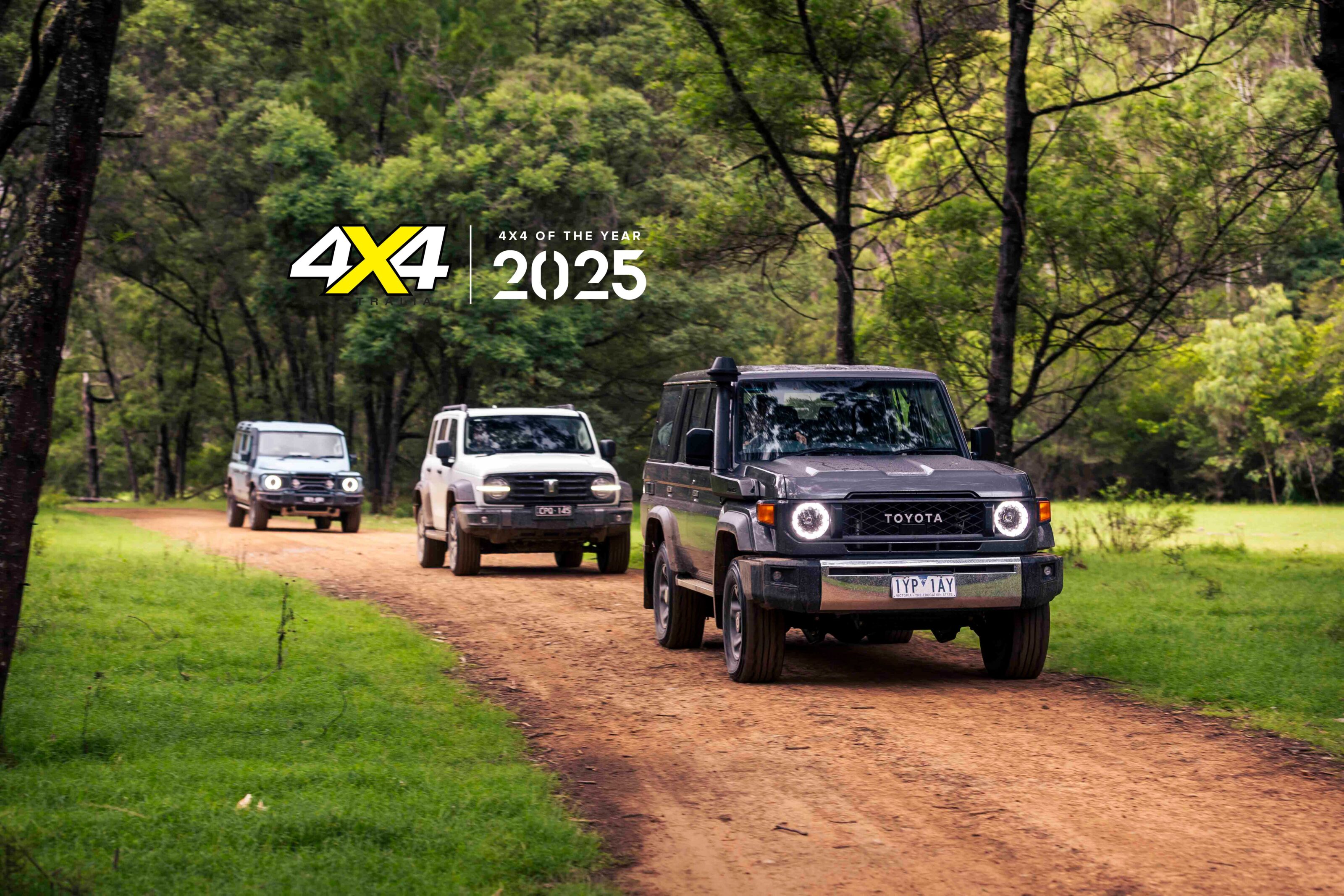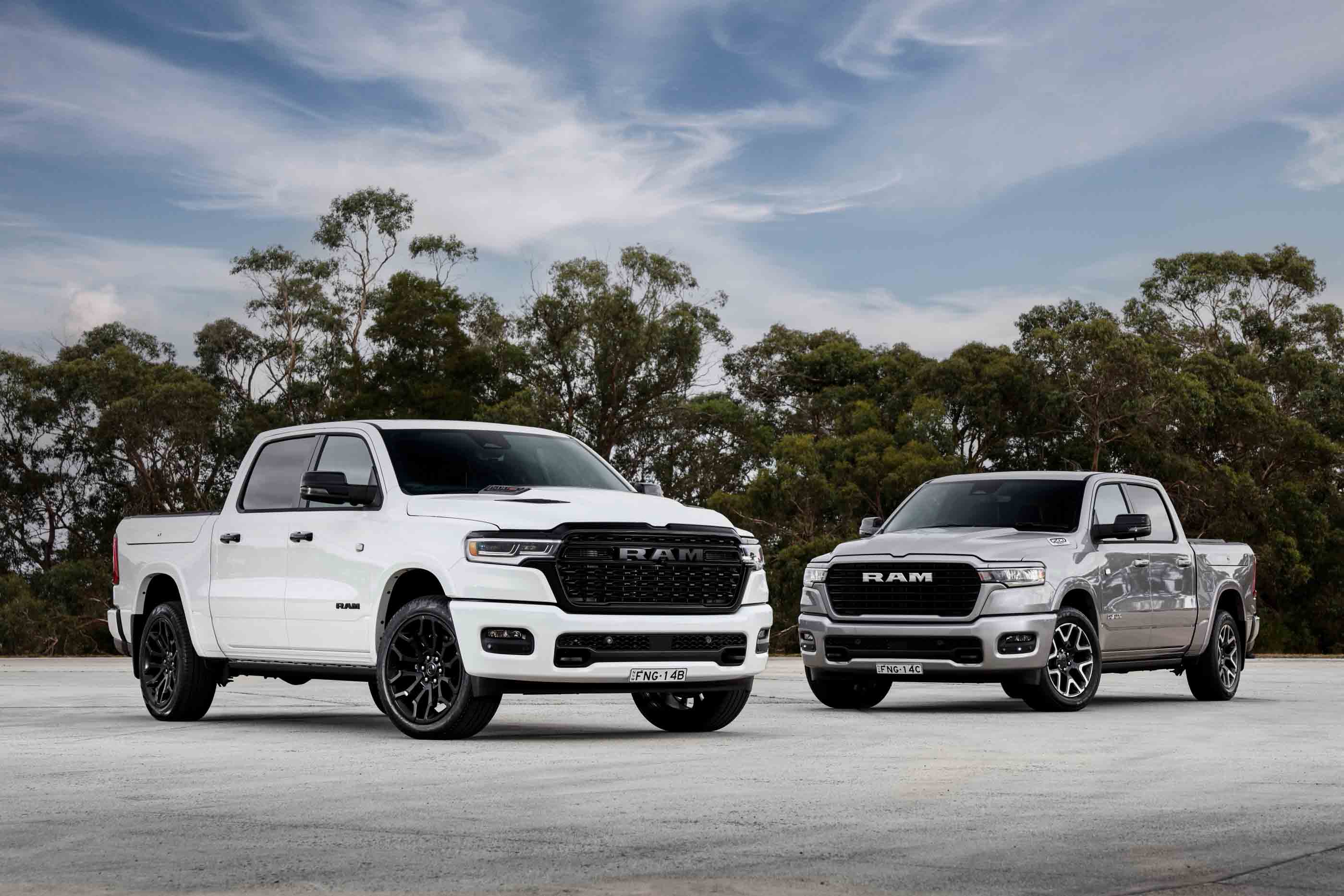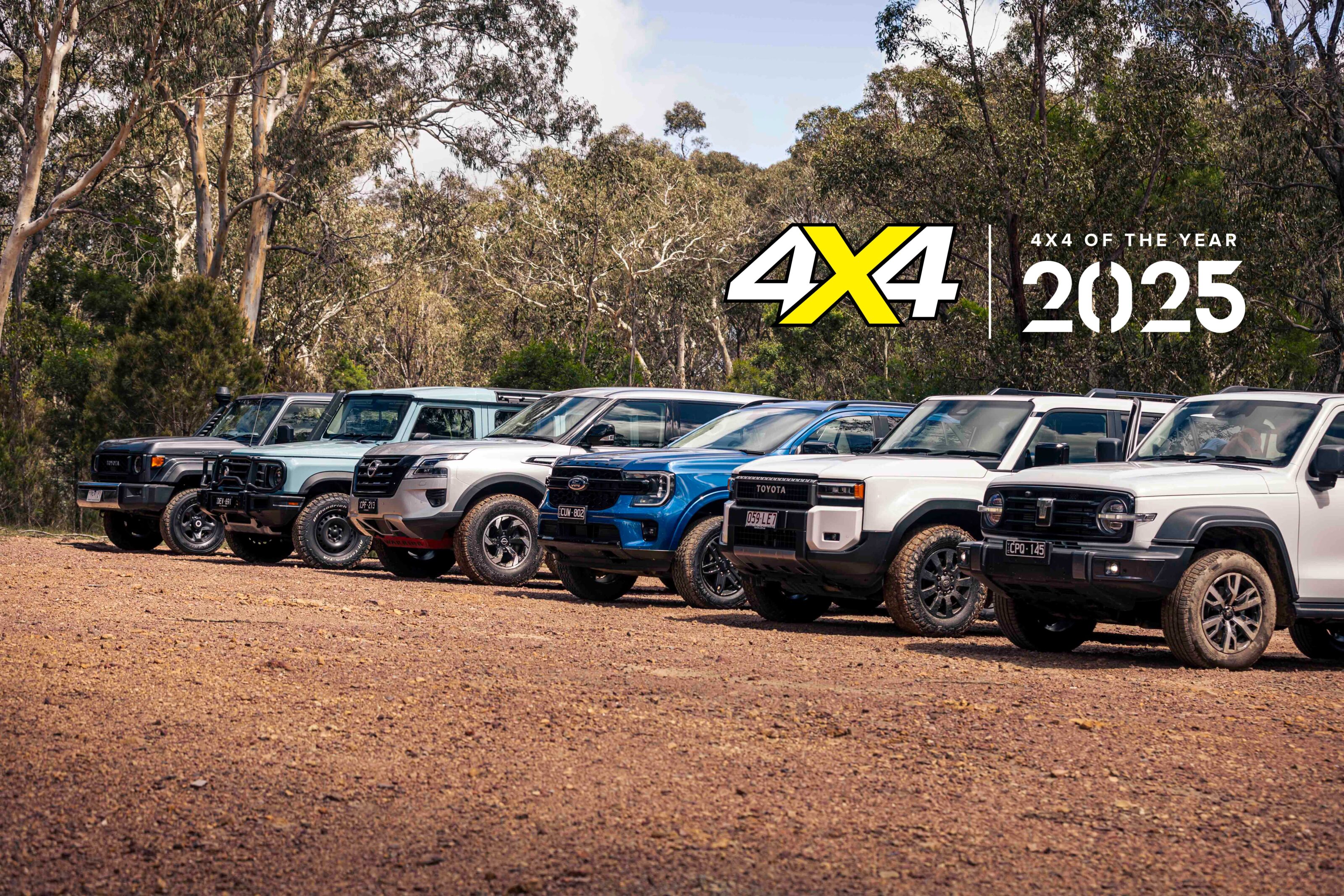Things we like
- Doesn’t feel like a base model car
- Bi-turbo engine performance
- Off-road ability
Not so much
- High price for entry level model
- No TPMS
- No LED headlights
While we’ve now driven plenty of new Ford Rangers since the launch a year ago, most of them have been higher specification Sport, Wildtrak and XLT variants.
So when we spotted the steel wheel-clad Ranger XL in the hotel carpark while we were in Alice Springs for the Finke Desert Race, we jumped at the chance for a drive.
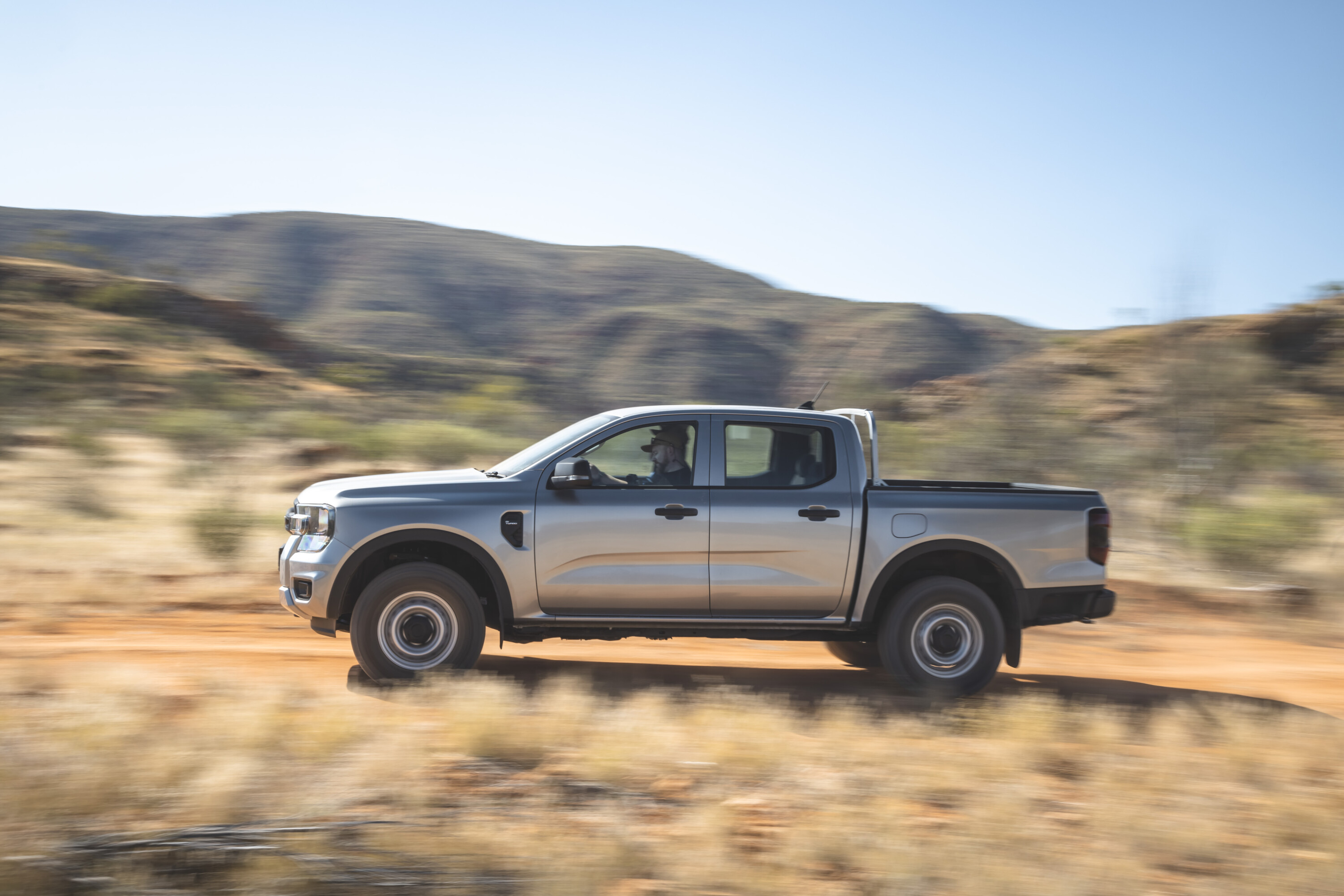
The XL is the entry level ride into the 4×4 Ranger range and it’s available with the choice of the single-turbo or bi-turbo versions of the 2.0-litre four-cylinder diesel engine. Thankfully, this rig was fitted with the 500Nm bi-turbo mill so we had half a chance of keeping up with the Raptors that formed the rest of our convoy. No, not really, but we tried!
The Ranger XL is available in double-, single- and super-cab bodies, and also as a cab-chassis. Obviously this one is the double-cab and it was fitted with the 10-speed automatic transmission. Even in entry level models, you can’t buy an RA Ranger with a manual gearbox.
JUMP AHEAD
What do you get?
In this trim our Ranger XL was priced at $53,680 plus ORC, and it was fitted with a few extras that added to the price including prestige paint ($700), heavy-duty suspension ($500), spray-in bedliner ($900) and the towing pack ($1700), so you can see that the price of entry in to a double-cab 4×4 Ranger isn’t cheap. In this case, you’re looking at upwards of $62K drive away with the bi-turbo engine.
That said, and despite its poverty-pack look with those steel wheels, the Ranger XL doesn’t feel like a stripped-out cheapie.
While the XL misses out on the multiple drive modes and some of the features of the higher-spec models, it still comes standard with the 10-inch A/V screen, adaptive cruise control, standard air-conditioning, and a reversing camera and rear parking sensors.
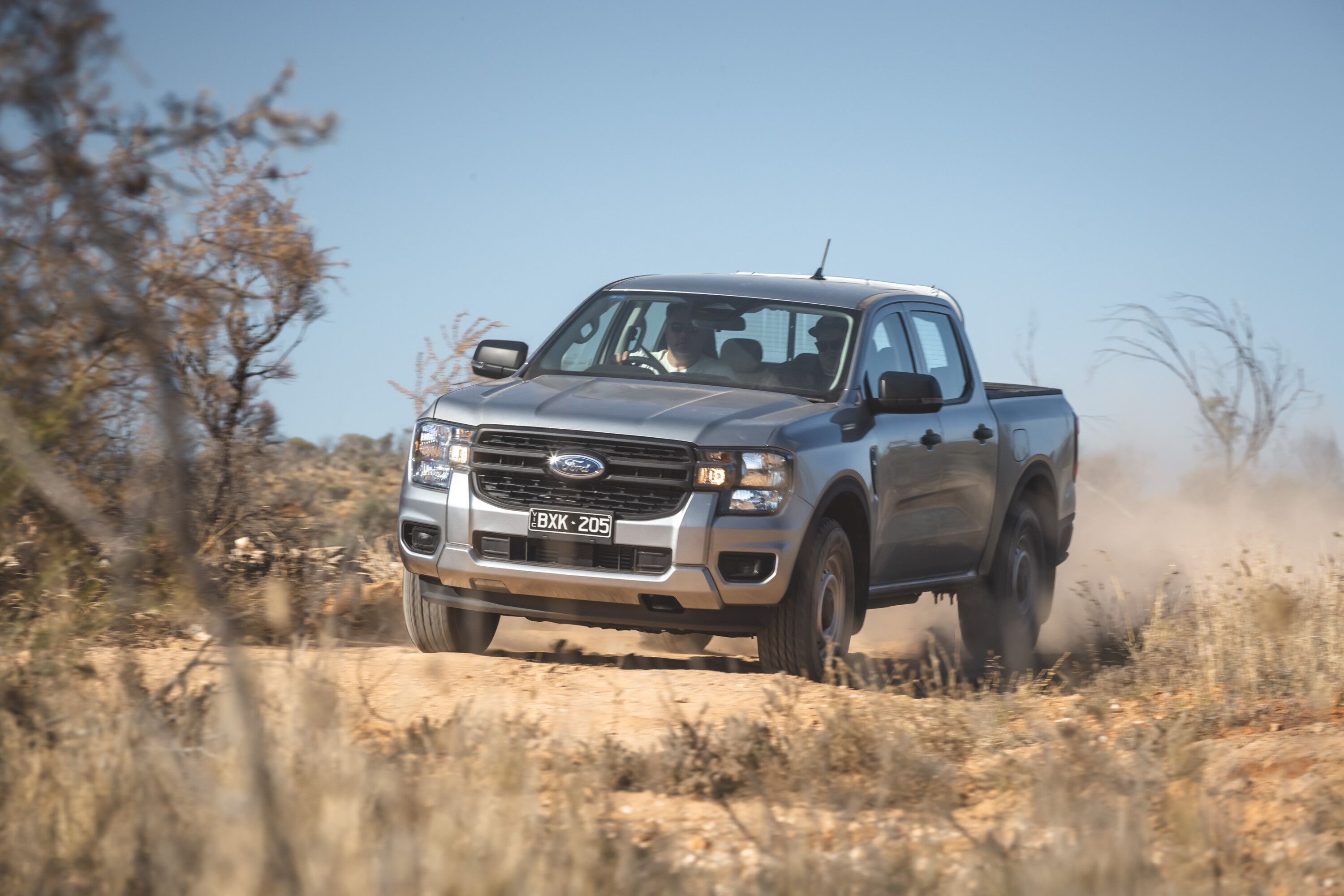
Because this example is fitted with the towing pack, it gets an integrated brake controller and a towing tongue to suit the 3500kg-rated tow bar, a camera, and the BLIS (Blind Spot Information System) is calibrated for towing, recognising when a trailer is attached to the vehicle.
Other safety kit includes AEB, ABS, ETC, rear cross traffic monitor, lane detection and keeping assist, collision mitigation and nine airbags.
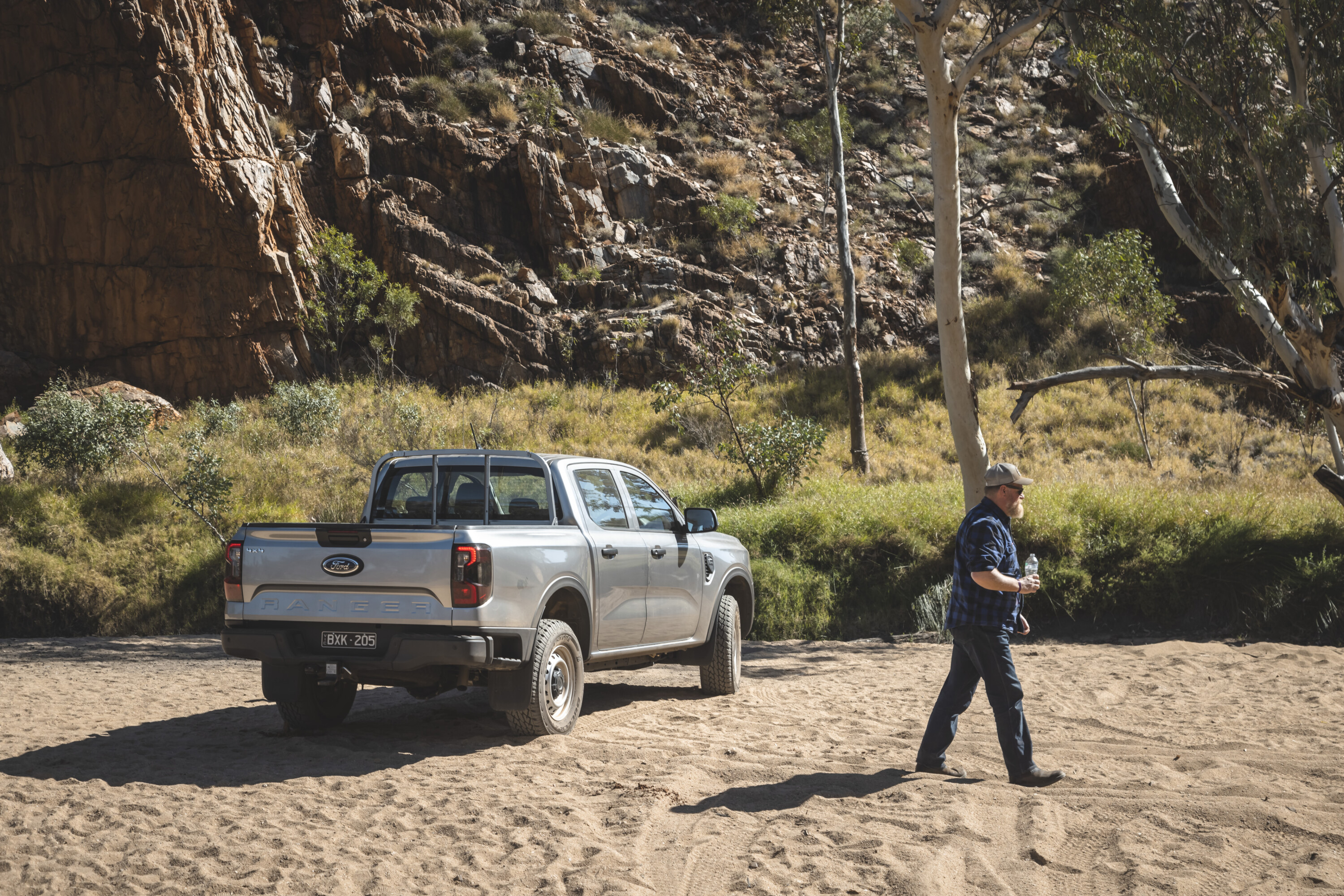
It was nice to be driving a vehicle with an ignition barrel and somewhere to put the key, and a conventional emergency handbrake lever and not an electric park brake. The conventional gear shifter is also easier to use than the e-shifter fitted to the AWD models, even if it still has the manual selection via tiny buttons on the side of the handle, and not a separate fore and aft gate.
A couple of things that the XL does miss out on that we’d like to see as standard are a tyre pressure monitor system (TPMS) and LED headlamps as are standard on the higher grades. The LEDs are a far better option than the standard halogen lamps, and Ford could take a note from Volkswagen in this regard as the new Amarok gets LED lamps and TPMS across the range.
On-road ride and handling
Our drive of the Ranger XL was on a day trip west of Alice Springs and out on the Larapinta Trail. The bi-turbo engine wants for nothing on the highway, easily overtaking slower traffic and giving the feeling that it would still offer decent performance with a load in the tub or when towing.
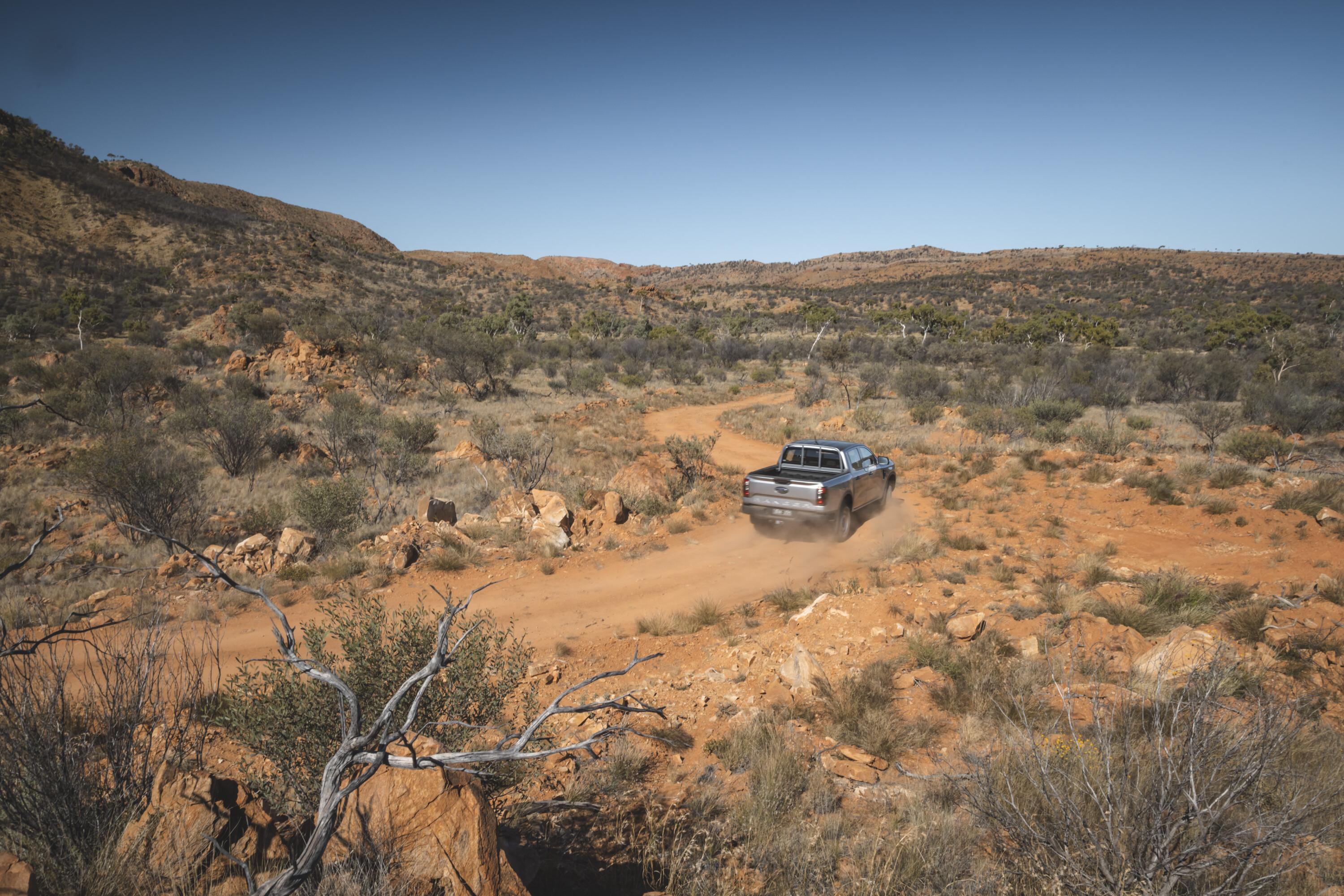
The heavy-duty suspension package as fitted to this test vehicle includes a heavier rear leaf pack with front and rear dampers specific to this set-up. I was impressed to feel that the suspension package didn’t adversely affect the ride and handling of this Ranger on the highway, or even on the sand desert tracks in the West MacDonnell Ranges.
We’re confident this heavy-duty suspension would have to be better than the standard rear leaf springs for carrying loads and towing as well.
Off-road
The off-highway section of this drive wasn’t particularly challenging, encompassing some sandy tracks, some rocky tracks, and a deep sandy beach beside a waterhole. The Ranger XL didn’t raise a sweat in these conditions and it rode nicely on its tall 255/70R17 all-terrain tyres.
The Ranger XL has a part-time, dual-range 4×4 system with a rear differential lock as standard.
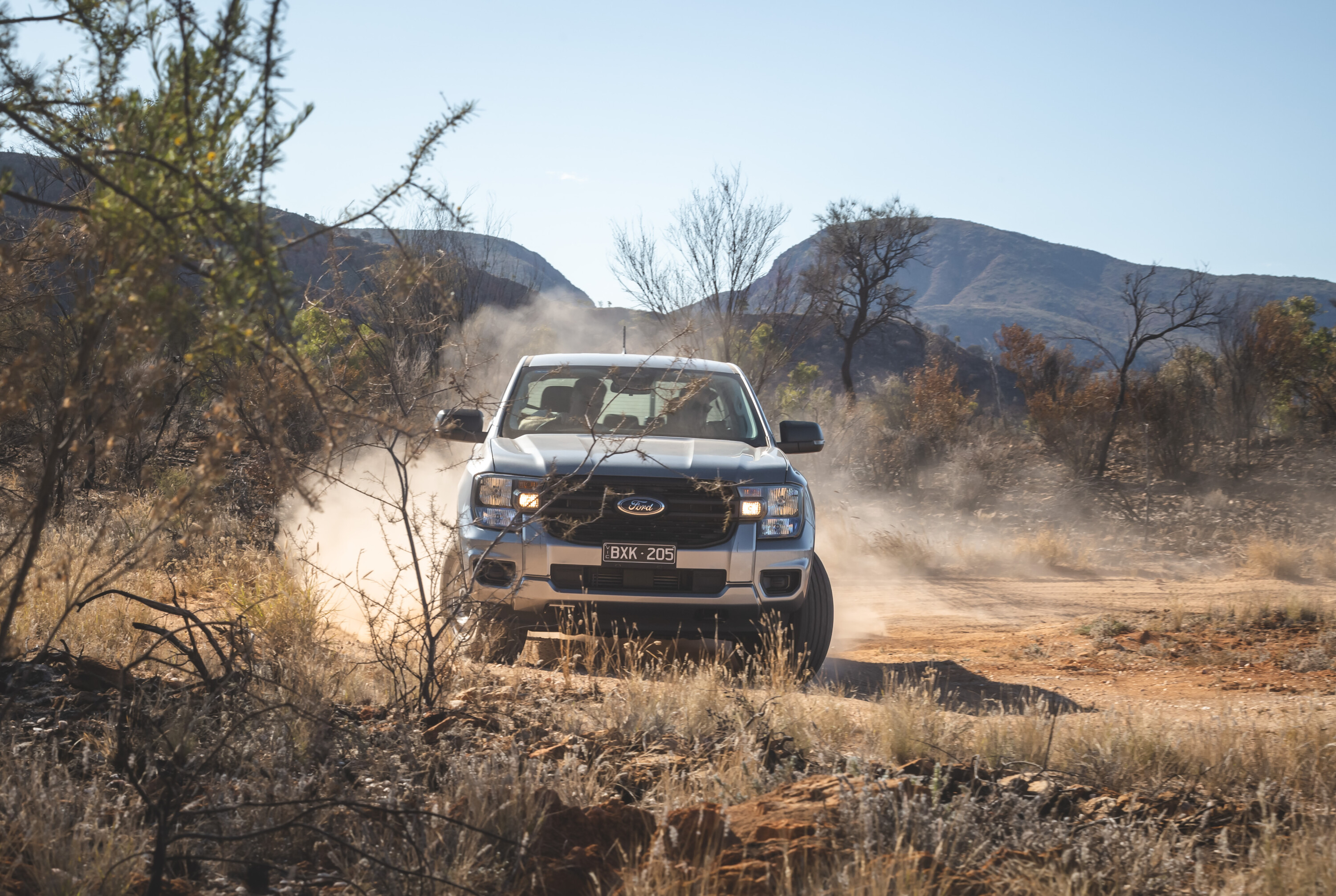
| Approach angle | 30u00b0 |
|---|---|
| Rampover angle | 22u00b0 |
| DepartureaAngle | 25u00b0 |
| Ground clearance | 234mm |
| Wading depth | 800mm |
Practicalities
The Ranger XL has four tie-down points in the cargo tub but no 12-volt power outlet. There’s a single front tow hook but it’s not suited for snatch recoveries. Steel underbody protection for the front part of the drivetrain is also standard.
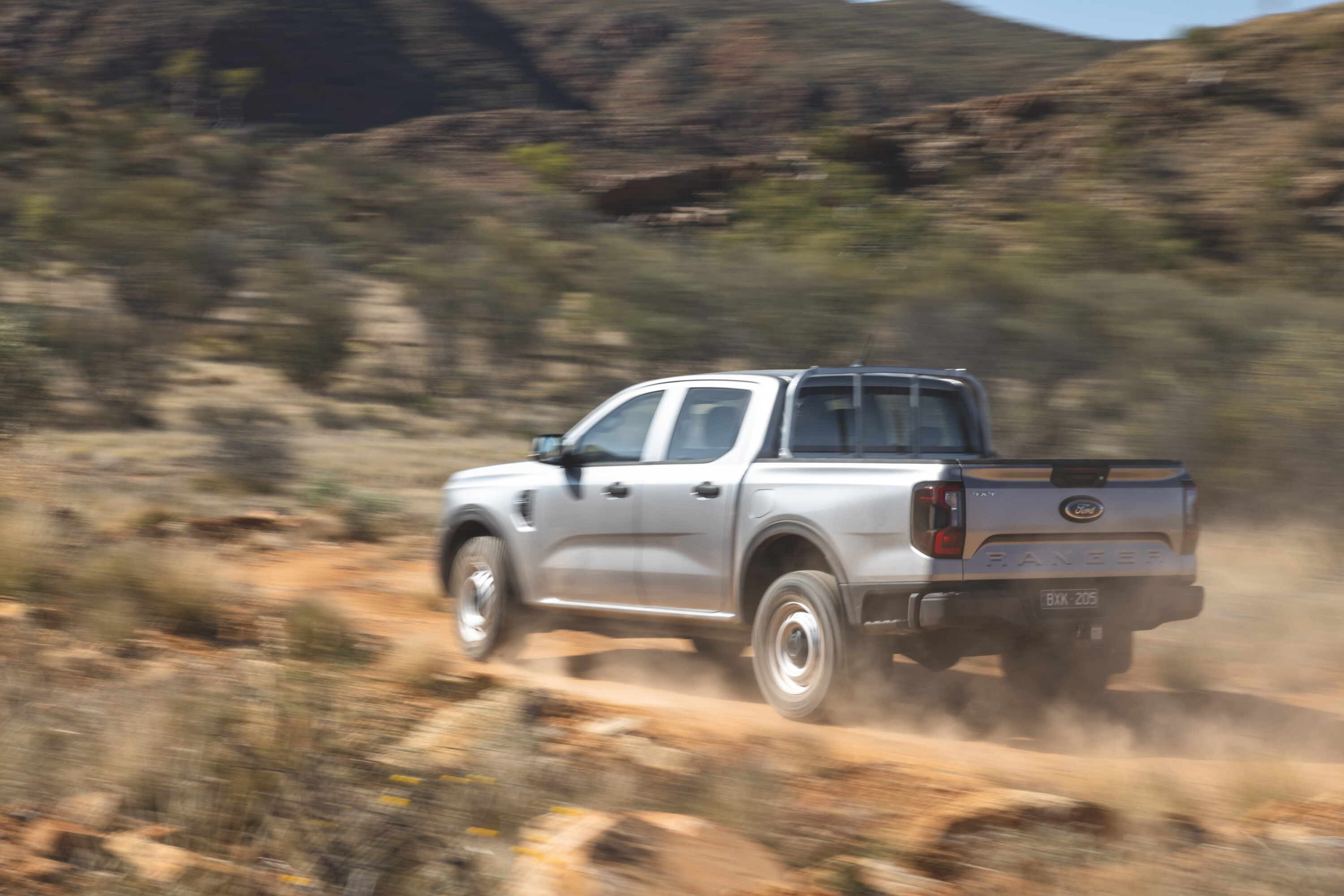
Verdict
While the price of the XL Ranger might not look like that of an entry-level model, the value in this vehicle comes from the fact that it doesn’t drive or feel like a stripped-out base model.
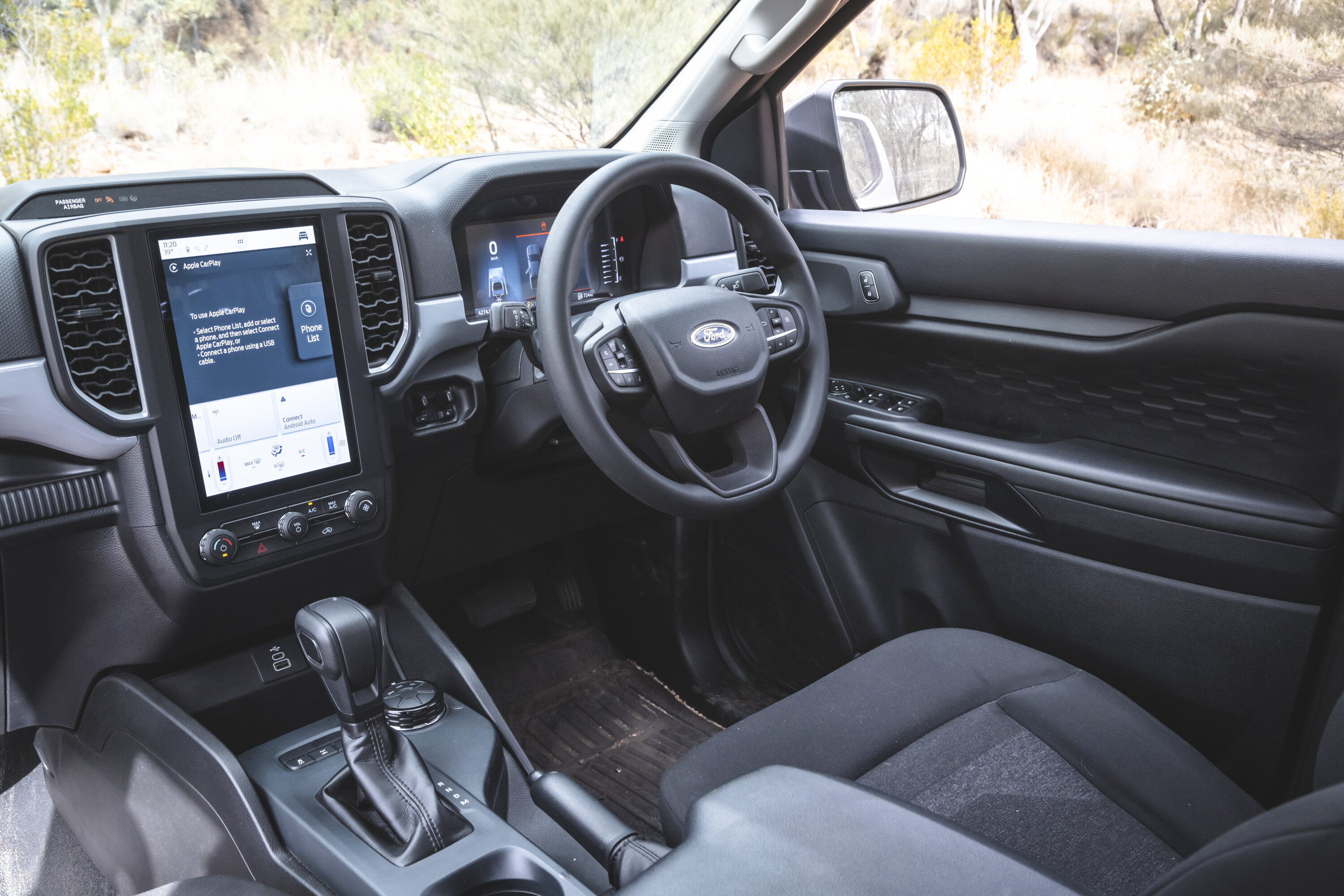
The chassis and bi-turbo powertrain remain class leading, and are only matched by the mechanically similar Amarok Life.
No other midsize 4×4 utes on the market today can match those riding on Ford’s T6 platform for dynamics and ride quality, and with its 154kW of peak power and 500Nm of torque, the performance of this Ranger XL isn’t left behind by the chassis dynamics.
2023 Ford Ranger XL 4×4 bi-turbo specs
| Price | $53,680 plus ORC |
|---|---|
| Engine | 2.0L I4 turbo-diesel |
| Capacity | 1996cc |
| Max power | 154kW @3750rpm |
| Max torque | 500Nm @ 1750-2000rpm |
| Transmission | 10-speed auto |
| 4×4 system | Part-time, dual range 4×4 |
| Construction | 4-door ute cab with tub on ladder frame chassis |
| Front suspension | Double wishbone IFS with coils |
| Rear suspension | Live axle with leaf springs |
| Tyres | 255/70R17 on steel rims |
| Weight | 2152kg (Tare) |
| GVM | 3230kg |
| GCM | 6350kg |
| Towing capacity | 3500kg |
| Payload | 1014kg |
| Seats | 5 |
| Fuel fank | 80L |
| ADR fuel consumption | 7.6L/100km |
Things we like
- Doesn’t feel like a base model car
- Bi-turbo engine performance
- Off-road ability
Not so much
- High price for entry level model
- No TPMS
- No LED headlights




